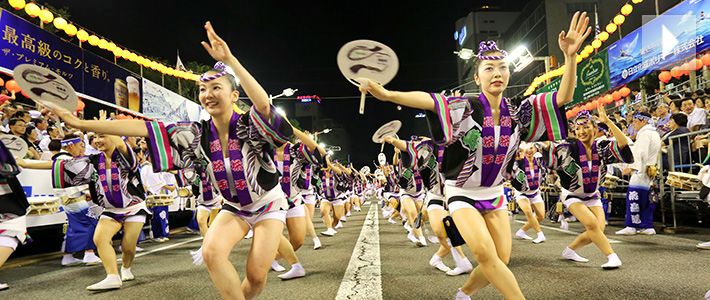
Matsuri Days (6): The Awa Odori and Shikoku
Why Not Dance? The Awa Odori Festival (Video)
Guideto Japan
Culture- English
- 日本語
- 简体字
- 繁體字
- Français
- Español
- العربية
- Русский
The Awa Odori is one of the most famous Japanese traditional dance festivals. On August 12–15, 2014, thousands of dancers in troupes known as ren filled the streets of Tokushima on the island of Shikoku. Amid color and movement, the leading ren stood out for the brilliance of their performances.
A Special Year for Shikoku
Acclaimed ren Gojahei was performing for the sixty-eighth time since its founding. While respecting the festival’s four centuries of history, Gojahei has added new touches to the Awa dance over the years to maintain its vibrancy. 2014 is a special year for Shikoku, as it has been chosen to mark 1,200 years since the establishment of the 88 temples associated with Buddhist monk Kūkai on its famous pilgrimage route.
The Awa Odori is believed to have its origins in a Buddhist dance to honor the spirits of ancestors, and Gojahei sought inspiration in Kūkai’s legacy. Its performance at the Tokushima Municipal Culture Center was backed by the chanting of sutras written by Kūkai, bringing the dance back to its Buddhist roots. After a year of practice, the Gojahei dancers brought a stirring energy and grace to four days of Tokushima summer.
(With thanks to Gojahei and the Tokushima Prefecture Tourism Association. Originally written in Japanese by Yoshimoto Naoko and published on August 22, 2014. Banner photo by Nakano Haruo.)video tourism dance obon Tokushima movies religion festivals Shikoku events international tourists dance performance traditional event